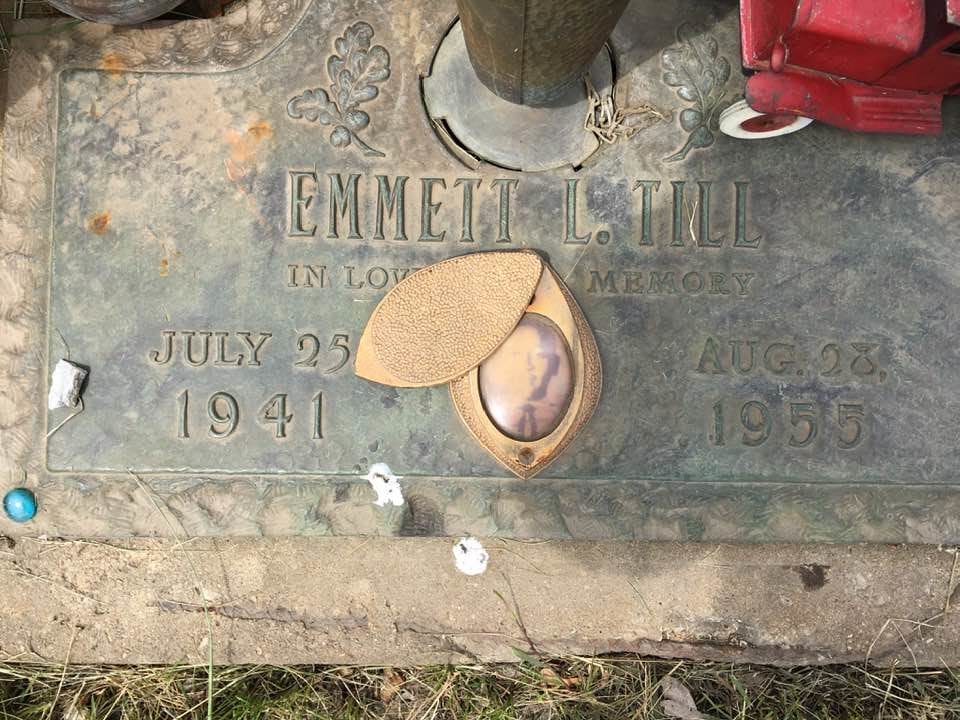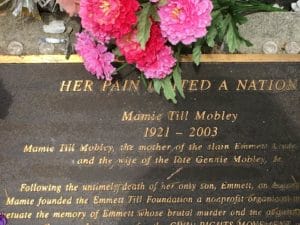On a sunny May afternoon, Katie Hall Educational Foundation, Inc. (KHEF) Chairman and CEO, Junifer Hall and its general counsel, Attorney John Henry Hall had the unique honor of visiting the internment sites of Emmett Till and his beloved mother, Mrs. Mamie Till-Mobley at Burr Oak Cemetery in Alsip, Illinois, a south suburb of Chicago.
In August 1955, Emmett Till’s mother granted her son permission to visit some of her relatives in the small Mississippi Delta town of Money, where he was accused several days later of violating the Southern custom of speaking without being given authority to a white woman. Mrs. Carolyn Bryant, a co-owner of a small store financially supported mainly by Black sharecroppers accused Emmett of this alleged improper behavior. Several days later, after the so-called flirtatious encounter with Mrs. Bryant, Emmett was kidnapped by Roy Bryant (Carolyn’s husband) and J.W. Milan (the half-brother of Roy) from Mose Wright’s home – his great uncle – in the rural area of Money.

Emmett’s highly disfigured body was found severely beaten, bloated, and tied down with a gin fan by a local fisherman in the Tallahatchie River. Instead of burying her son in the Deep South, Mrs. Till-Mobley insisted on an open casket, so that the world could view the remains of her son, who bore no resemblance to the handsome teenager that traveled to the Mississippi Delta a week earlier. A photo of Emmett’s remains was featured in Jet magazine and other Black press media outlets of the time. It was reported at the time, that thousands of people filed by the casket, some crying uncontrollably at the sight of his disfigured remains, which revealed the horror inflicted on 14-year-old Emmett – a teenager. This act of inhumanity to man and the brutal murder galvanized the modern Civil Rights Movement in America; and would later inspire Rosa Parks in December 1955 to not yield her seat to a white passenger on a bus in Montgomery, Alabama.
Emmett’s killers, who later confessed to the crime in an article published in Life magazine were acquitted of any wrongdoing by an all-white Sumner, Mississippi jury. Now, an Emmett Till historic marker outside the Courthouse in Tallahatchie County provides its significance in the murder and the Civil Rights Movement in America.

The tragic murder of Emmett affected those living in and around the Town of Money profoundly, including a 17-year-old Katie Beatrice Green (Hall), a native of Mound Bayou, which was only a relatively short distance away in Bolivar County. During her lifetime, U.S. Representative Katie Hall, the State of Indiana’s first African American to serve in the United States Congress – male or female (circa 1982-85) and author/sponsor of the Dr. Martin Luther King, Jr. National Holiday Law many years later, would often speak of Emmett and the severe racial segregationist and unjust laws existing and strictly enforced in the Mississippi Delta and throughout this Southern state in the 1950s and 1960s.
The Katie Hall Educational Foundation, Inc. Executive Board members decided to visit the internment sites of these great Americans, who inadvertently changed the course of civil rights in America. Even after Emmett’s death, Mrs. Mamie Till-Mobley continued to seek justice for her son until her demise. Also, her pain united a nation – America.






